I’ve been out in the garden gathering green beans and processing them for the winter. The plants are huge this year and the leaves are so large, there is no more distinguishing rows. I always plant Bush Blue Lake beans because they do not have to be staked and they produce stringless beans. This year has offered a bumper crop with the cool, early, summer temps and late arriving heat.
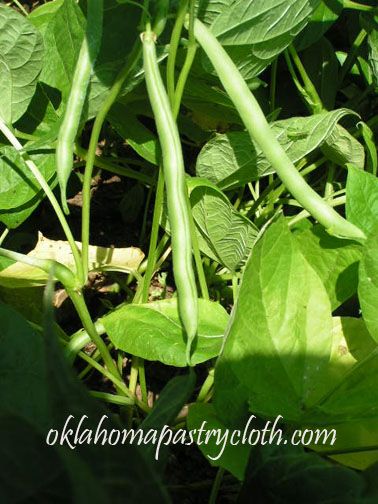
There is nothing more relaxing than sitting on the porch or in the den with a big bowl of beans in your lap, snapping them into another bowl. Pop – pop – pop! You get into a rhythm and your mind is soothed by the tempo. And that fresh smell!! Every so often, you just have to sample one of the sweet, juicy pods and you eat the whole thing raw! Can’t get any healthier than that!
Below, I have dedicated this post to a pictorial demonstration on canning green beans using the raw pack method. Because beans have a low acidity, all beans must be pressure canned at 10 lbs pressure for at least 65 minutes. A pressure canner with a guage or a weight is required. They can be purchased at hardware stores, WalMart and other similar stores and online.
Step 1: Wash green beans several times until all dirt, sand and old flowers are removed. Snap the pods to create uniformly, bite-sized pieces.
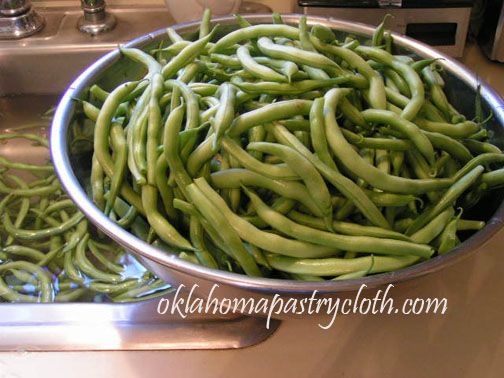
Step 2: Wash all jars and lids in very hot, soapy water and rinse in hot water. Dry.


Step 3: Put raw green beans into jars to within 1/2″ of the top of the jar and include 1/2 teaspoon of canning salt or uniodized salt if desired. Shake the jars as you put in the beans to make the beans gravitate to the bottom evenly.
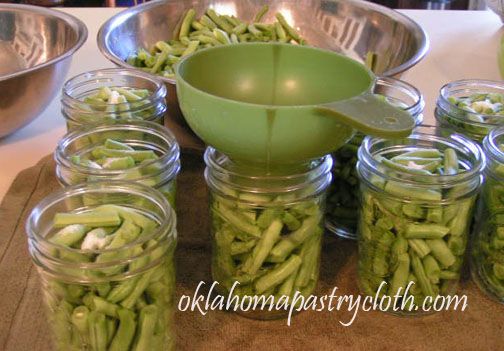
Step 4: Pour boiling water into each jar and over the beans to within 1/2″ of the top of each jar, leaving a 1/2″ head room. Run a plastic knife down the inside side of the jar to remove any air bubbles.
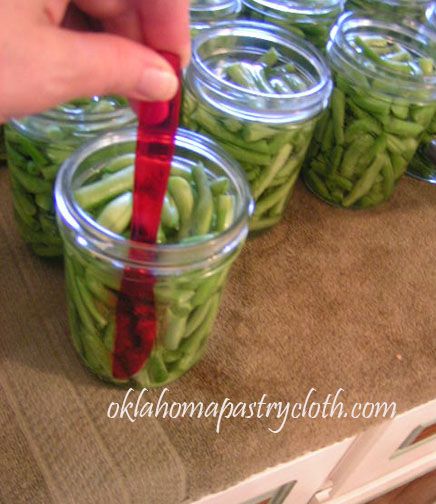
Step 5: Use a clean, damp cloth to wipe the edges of the jars. In a saucepan, cover the lids with water and bring them to a boil and remove from heat. Using tongs, carefully place the hot lids on the jars and put a ring in place. Tighten the rings just enough to call them tight. Too tight can cause problems!
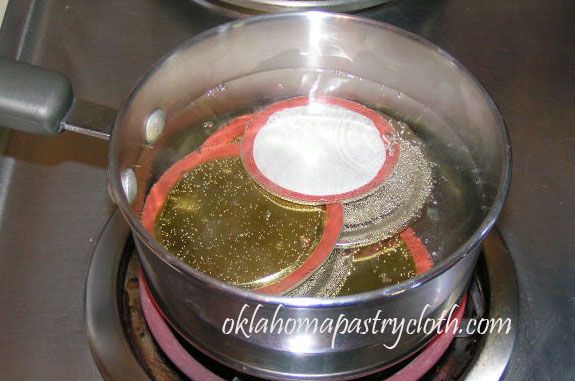
Step 6: Place about 2 inches of hot water in the canner and place the rack on the bottom. Fill the canner with jars according to the capacity of your particular canner. Tighten the cover and if a weight is used, put the weight in place. I like a canner that uses a weight because it is more accurate and does not need to be adjusted. If using a canner with a gauge, please follow the instructions that come with your canner. Turn the heat on high and wait until the weight begins to jiggle. At this point, reduce the heat to medium-high and monitor the weight, which should jiggle about every minute or so. Set the timer for 65-75 minutes and continue to monitor the pounds of pressure by listening to the weight.
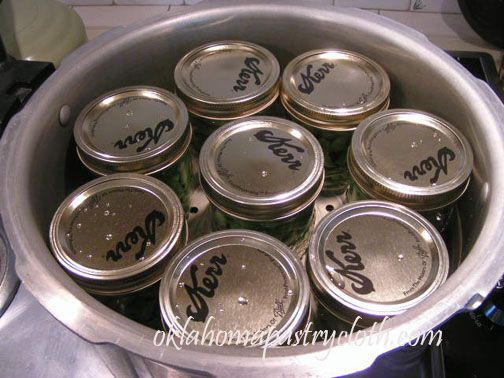
Step 7: When the beans are finished processing, turn off the heat and allow the canner to cool, unmoved, until the pressure has completely dissipated. It is very easy to get very severe steam burns if the canner has not been allowed to cool properly. When the canner has depressurized, remove the lid and carefully remove the jars, using jar tongs with one hand and holding the bottom of the jar with an oven mitt on the other. Soon, the pinging pop of jar lids completing a seal makes you smile because you know that you have been successful.
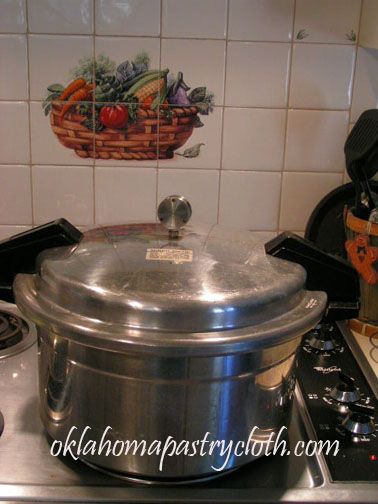
There is something very satisfying in neat rows of freshly canned produce in sparkling jars with golden lids. These are ready for the pantry and will be enjoyed for sure this winter!! I hope that you will take a stab at canning beans. If you don’t have your own garden, the local farmer’s market, health food store or grocery store has fresh beans that will work fine. Just make sure that they are crisp and not limp. Happy canning! It’s bean fun. 🙂
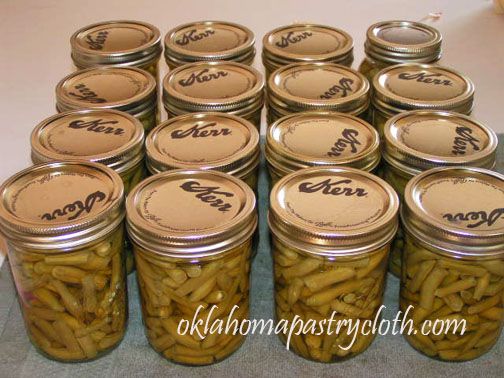

 Homestead Revival
Homestead Revival Paratus Familia
Paratus Familia Rural Revolution
Rural Revolution